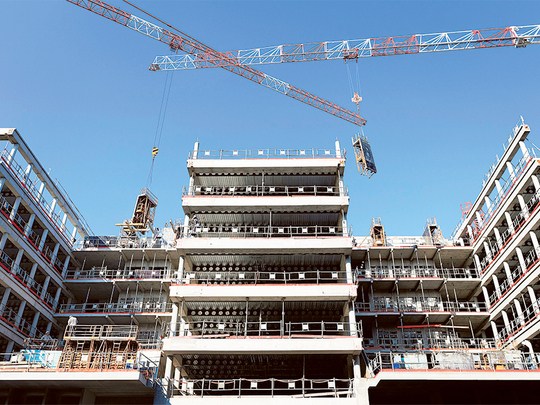
Dubai: Any regulation to create mandatory affordable housing for “all new residential developments in Dubai” would have to push property values to around, or even below, the Dh600 per square foot (psf) level. Currently, around Dh700psf is rated as the most accessible pricing to put a foot into Dubai’s property market.
“Residential stock in Dubai Investments Park can be got at under Dh700, and there could be a couple of other freehold clusters where similar values could be quoted on some property units within,” said Chandrakant Whabi, CEO of Acrohouse Properties. “But there could be caveats attached as the units may not offer balconies or will have cramped views.”
Locations such as International City and Discovery Gardens, which were aimed at the budget-conscious investor, had seen sharp upturns in 2013, and instantly putting them out of reach for buyers in this category.
For the record, the priciest transaction for a villa in Dubai last year was for Dh58.3 million, for a 7,613 square feet villa on the Palm, according to Luxhabitat.
This is why the proposal by Dubai Municipality to introduce affordable housing quotas for all new residential developments in Dubai is significant. Only such a move would force developers to create a separate stock, even though they may be limited in numbers, which would encourage more of Dubai’s tenants to buy properties for their own use. (Dubai had in the middle of the last decade sounded out similar options to create a stock of affordable housing, but which had to be put off after the financial crisis intervened.) Now, with transaction activity in the local market rather subdued, and the rental situation stabilising, the move to revive the proposal could have better traction. “With the introduction of the Federal mortgage caps and the doubling of property registration fees [in Dubai], we saw genuine end users forced into a holding pattern as they attempted to make the transition from rented accommodation to owner occupation,” Steven Morgan, CEO of Cluttons Middle East, said in a statement on Sunday.
“Now, with rents starting to show greater stability, households have a window of opportunity to consolidate their finances and make that leap to owner-occupation. The prospect of those on monthly incomes of between Dh4,000 and Dh12,000 being able to control their rental outgoings will no doubt go some way to aiding the speed at which deposits can be amassed.”
But creating affordable housing stock will not be easy in the more established of Dubai’s freehold residential clusters. Land value has been gaining steadily in the last 24 months, and if developers were to offer units at “affordable” costs, they may have to “subsidise” the sale price. And compensate on the pricing they attach for the non-affordable housing they have created in the same development.
Charting this particular course represents the obvious difficulty for a developer. And it could also upset the balance that is so vital for a city in how it expands outwards.
“Dubai is clearly not short of affordable neighbourhoods — Karama and Satwa are two key stand out areas that evolved organically at the edges of the Deira-Bur Dubai and Jumeirah districts, respectively,” Faisal Durrani, Cluttons’ International Research and Business Development Manager, said.
“Karama and Satwa have over time been absorbed into the city, but we would strongly argue against deliberately creating affordable areas through the sanctioning of off-site affordable housing provisions as there are social implications to consider alongside the impact it can have on the urban fabric of a city.”












